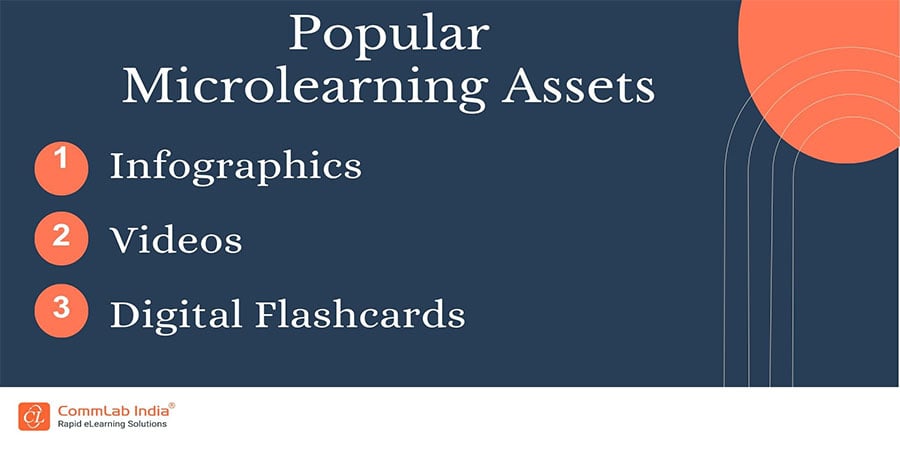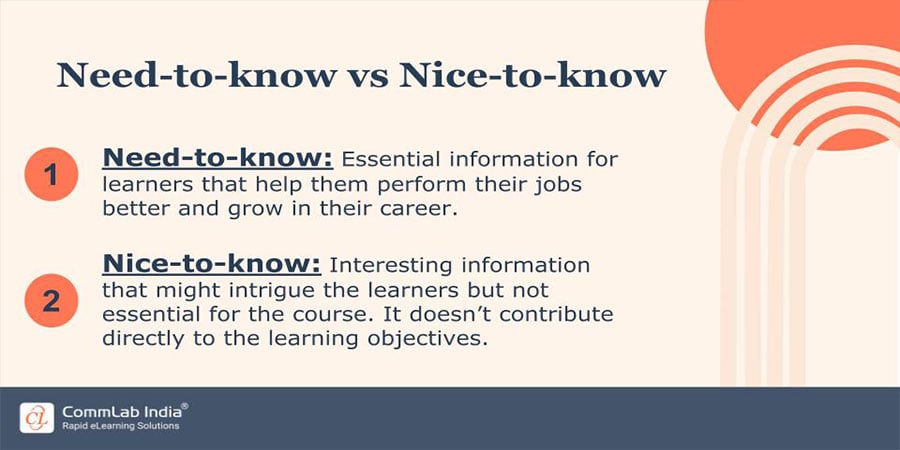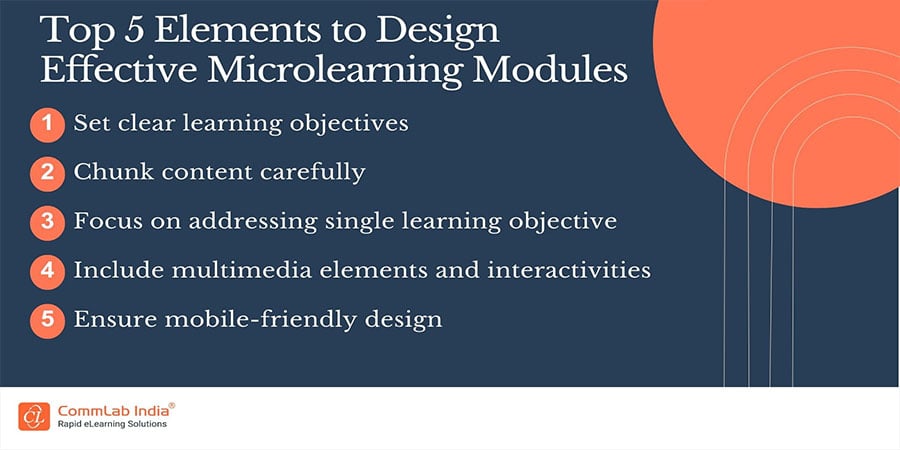A Comprehensive Guide on Using Microlearning for Effective Onboarding

Today's world is fast-paced, technology-driven, and quickly-changing. All these factors have significantly reduced attention spans of the learners. So if you’re planning to onboard new talent, take a pause and think how you can ensure effective onboarding. Well, you can use microlearning for effective onboarding.
Because traditional onboarding training methods are no longer sufficient to meet the needs of modern learners comprising of Millenials and Gen Z. This new-age workforce is inclined toward training resources that are concise, relevant, and easily accessible. And microlearning checks all the boxes. Microlearning offers them the freedom to learn at their own time and pace and fit into their busy schedules.
Use Microlearning for Effective Onboarding Now!
Here are the top 3 reasons why:
- Eliminates information overload
- Facilitates spaced learning
- Enables personalized learning
In this comprehensive guide, we will explore:
- What is Microlearning?
- Features of Microlearning
- Benefits of Microlearning for Onboarding
- Top 3 Reasons to Use Microlearning for Effective Onboarding
- How to Implement Microlearning for Effective Onboarding?
- Top 10 Microlearning Assets for Effective Onboarding Training
What is Microlearning?
Microlearning is an approach that delivers bite-sized, focused information to learners. It focuses on addressing a single learning objective. Typically, microlearning videos range between 7 to 15 minutes. Moreover, microlearning encompasses various microlearning formats or assets that cater to different learning styles, thereby boosting learner engagement and better retention. All these elements contribute toward effective and desired training results.
→ Download Now: Where Does Microlearning Fit in Your Learning Strategy?
Features of Microlearning
- Provides short and concise information
- Addresses single learning objective
- Leverages variety of microlearning assets
- Offers mobile-friendly design
- Can be used as standalone course or part of the larger learning resources
Benefits of Microlearning for Onboarding Training
Flexibility
Microlearning offers the new employees the flexibility to learn whenever they want, wherever they want. Yes, you read it correctly! In fact, microlearning modules can be accessed on various devices. This allows new hires to learn on their own terms and at their own pace. So whether they're in the office, working remotely, or commuting, learning with microlearning is only a click away!
Promotes Engagement
Microlearning modules are brief and focused, so they cater to the shorter attention spans of learners. That’s right! The bite-sized nuggets of information are easy to consume in contrast to lengthy, boring online training courses stretched over hours. Apart from that, microlearning also leverages a variety of microlearning formats which attend to different learning styles and preferences. Check out the infographic below to know some popular, trending microlearning assets for designing effective, engaging microlearning modules.

All these microlearning formats keep the newly hired employees engaged and interested in information that is presented to them.
Relevance
Short, concise content is indeed the standout point for microlearning. However, it is equally important for the microlearning modules to be relevant and deliver targeted information. Isn’t it? Well, microlearning takes care of relevance too. It focuses on providing need-to-know information to the learners which fulfills their immediate onboarding learning goals and contributes to the learning objectives.
Improves Retention
Microlearning definitely contributes to improved retention and recall. This is particularly beneficial for the new hires. For starters, information presented in small chunks and in a spaced out manner tends to improve retention. Apart from that, being new to the organization, they might not remember or be familiar with every information that is shared with them. So they certainly need something to fall back on. And microlearning is a reliable buddy!
They can easily revisit various onboarding concepts, terms and policies, dress code, mission and values, goals, organizational hierarchy, team structure, etc. These two elements make microlearning an ideal method for long-term knowledge retention and better application of concepts.
Ease of Updates
As the business trends and your organization evolves, onboarding materials can quickly become outdated. But microlearning can save the day! The microlearning modules are easier to update and revise. This ensures that your onboarding training materials are always relevant and your new hires receive the latest information.
Top 3 Reasons to Use Microlearning for Effective Onboarding
Microlearning offers a variety of benefits, but here are the top 3 reasons to leverage microlearning for effective onboarding training.
Eliminates Information Overload
Information overload in online training isn’t uncommon! But doing so during onboarding training is a big no! When the new employees are bombarded with too much information all at once, it leads to decreased attention, comprehension, and retention. This is where microlearning comes in handy!
Microlearning addresses the challenge of information overload by breaking down complex topics into smaller, focused modules. Each microlearning module covers a single learning objective delivering only the important, need-to-know information. This way, microlearning prevents learners from feeling overwhelmed and allows them to absorb information at a manageable pace. Check out the infographic below to know the difference between need-to-know and nice-to-know content.

Facilitates Spaced Learning
Another important reason to use microlearning for effective onboarding is spaced learning. Following this method, microlearning includes distributing short onboarding training sessions over time with proper gaps between each training session. This spacing between learning modules allows learners to review and reinforce the acquired knowledge.
And as new microlearning modules for onboarding training are introduced, the new employees can easily revisit previous ones which enables them to interlink the concepts better, thereby strengthening their memory recall. Spaced learning is an effective learning method that helps beat the forgetting curve among the learners as it enhances long-term memory retention compared to cramming information in a single session.
Enables Personalized Learning
I’m sure you’d agree that every employee is unique! Whether they are your current employees or the new ones, you can’t provide training to all of them in the same manner. With different roles, responsibilities, interests, backgrounds, learning preferences, each has their own learning style. Therefore, if you opt for a one-size-fits-all training approach for onboarding, it often fails to engage and cater to the diverse needs of your new employees. Not so welcoming, right?
Turn things around by using microlearning for effective onboarding training. Microlearning enables personalized learning experiences. This allows the new employees to choose learning modules that align with their roles or areas they need to focus on. Moreover you can also curate customized learning pathways for different departments or job roles. The customization aspect ensures that your new hires receive training that directly relates to their responsibilities, thereby making the onboarding process more meaningful and engaging.
Check out the infographic below to know the top 5 elements to design microlearning for effective onboarding training.

How to Implement Microlearning for Effective Onboarding?
Step 1: Content Mapping
Start by outlining the learning objectives and identifying the key topics and information that need to be covered for effective onboarding. Segregate them into groups and categories based on a logical and relevant sequence. Some microlearning modules, such as welcome message, vision, mission, goals, company policies, organizational structure, etc., can be common for all the new employees. OthersEED can be specific to certain job roles, based on educational background, and other criteria.
Step 2: Creation and Curation
Create microlearning modules to deliver focused and targeted information to the new employees. You can also leverage different microlearning formats to cater to various learning styles. This boosts engagement and motivation among the new employees to acquire new information without being stressed or having to deal with cognitive overload. Make sure that the content presented in microlearning modules aligns with your organization's culture, values, and training objectives.
Step 3: Select the Right Hosting Platform
Choose a Learning Management System (LMS) or a dedicated platform that supports microlearning. It will enable you to host and deliver your microlearning modules effectively. Check out the video to understand why you should consider investing in a learning management system.
Step 4: Spaced-Out Scheduling
For effective onboarding, keep in mind to release the microlearning modules over a certain time gap to avoid overwhelming new hires. Having a spaced-out schedule in place helps beat the forgetting curve and enhance knowledge retention among the new learners.
Step 5: Integrate Feedback and Iteration
Feedback is the way to ensure effective onboarding. So try to gather feedback from your new employees regarding the effectiveness, usability, and engagement of the microlearning modules. You can even leverage the learning analytics for the same. Based on the feedback, you can make improvements and updates to the microlearning modules as necessary.
Top 10 Microlearning Assets for Effective Onboarding Training
Videos
You can use videos to introduce new employees to the company's mission, vision, values, convey welcome messages from senior leaders, etc. Moreover, videos are a great way to provide a virtual tour of the workplace, introducing key areas and facilities. This is particularly useful when onboarding remote employees.
Infographics
Infographics present information in a visually appealing and easy-to-understand format. So you can use them to present and explain organizational structures, hierarchies, processes, etc., to the new hires.
Interactive Quizzes
To ensure your new employees are headed in the right direction, conducting an evaluation is essential. Therefore, your microlearning modules can incorporate interactive quizzes to assess new employees' understanding of important topics. You can design quizzes to test your new hires’ knowledge about the company policies and procedures, tools used by the company, features, list of clients, compliance regulations, safety protocols, and a lot more. Quizzes help you provide immediate feedback to the learners and help reinforce learning by offering timely support.
Simulations
Simulations are an effective microlearning asset to provide hands-on experience to the new employees. You can leverage it to facilitate immersive learning experiences to the new hires that they might come across on the job without the real-life consequences.
Micro Podcasts
Micro podcasts are an effective microlearning asset as you can use them to provide effective onboarding training. You can use them to share organizational success stories, employee testimonials, and insights from senior leaders. This helps new employees understand the company culture and values in a better manner and align their actions accordingly.
Interactive eBooks and PDFs
Interactive eBooks are a great way to provide comprehensive information about company policies, employee benefits, guidelines, organizational culture, etc. Moreover, you can use interactive PDFs to explain various tools, their features, workflows, etc. You can integrate interactive elements like clickable links, drag-and-drop, multiple choice questions (MCQs), etc., to make the onboarding training process engaging.
Short Animations
Short animations can be used to explain complex concepts, product features, technical processes, dress code, etc., to the new employees in a visually engaging and memorable way.
Digital Flashcards
Digital flashcards are a microlearning format that help in effective onboarding training. You can incorporate them into the microlearning modules to reinforce important definitions, terminologies, industry-specific jargon, etc., that new employees need to be familiar with.
Interactive Games
Gamified microlearning modules can be used for orientation and employee socialization. This helps employees get familiar with the company structures and objectives in a better way. Micro games can be used to foster various values like team spirit, cooperation, coordination, and even social learning as employees get to interact with each other on a more personal, informal level. Apart from that, you can use this microlearning asset to train new employees on product knowledge, sales techniques, and customer interactions in an engaging and immersive way.
By leveraging these various microlearning assets, you can provide an engaging and effective onboarding experience to your new employees. These microlearning formats allow you to cater to different learning styles and preferences, thus helping you equip new hires with the knowledge and skills they need to succeed in their roles.
To Sum It Up!
With microlearning, create a comprehensive and effective onboarding program that sets your new employees up for success from day one. It helps tackle all the modern-day challenges head-on and promote better learner engagement, retention, and higher completion rates. So you can use microlearning for effective onboarding, to train your on-the-go sales team, and a lot more. But where does microlearning exactly fit in your learning strategy? Check out the eBook below to find out.





